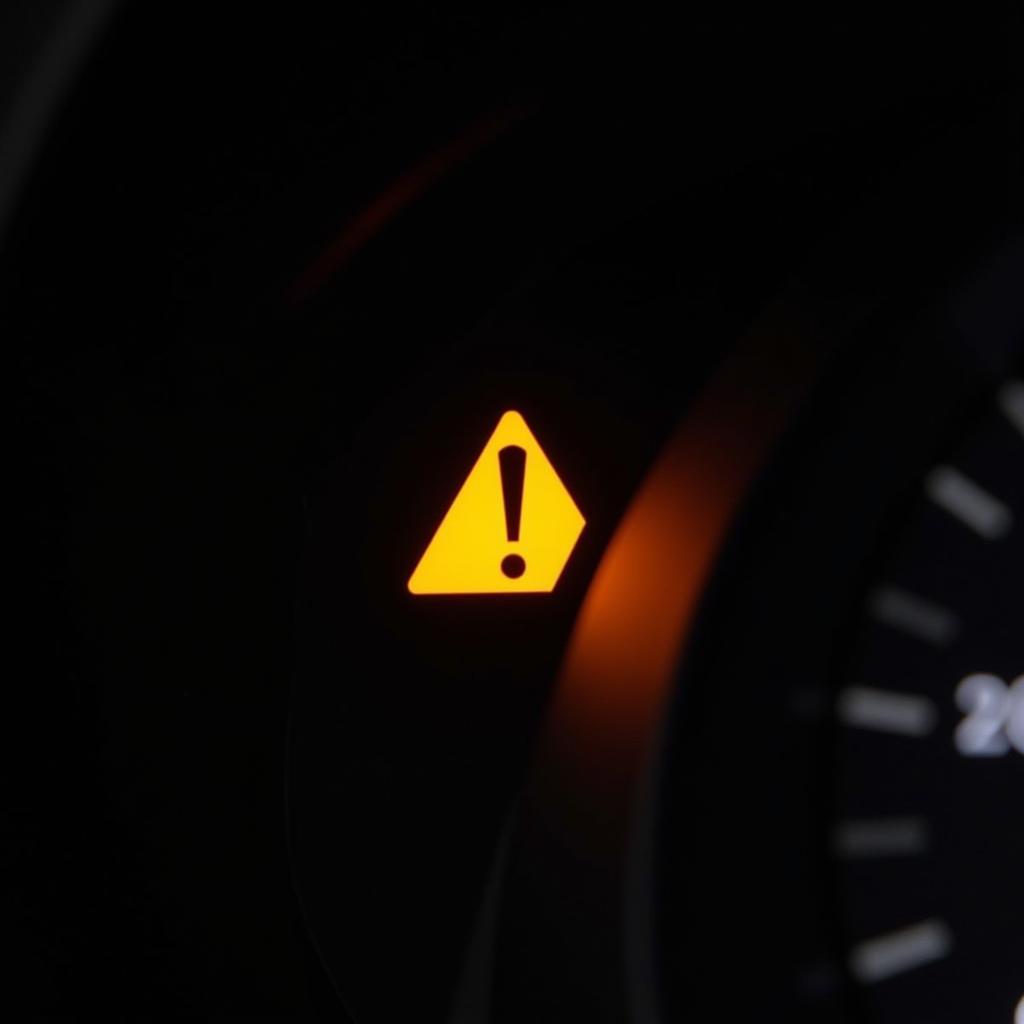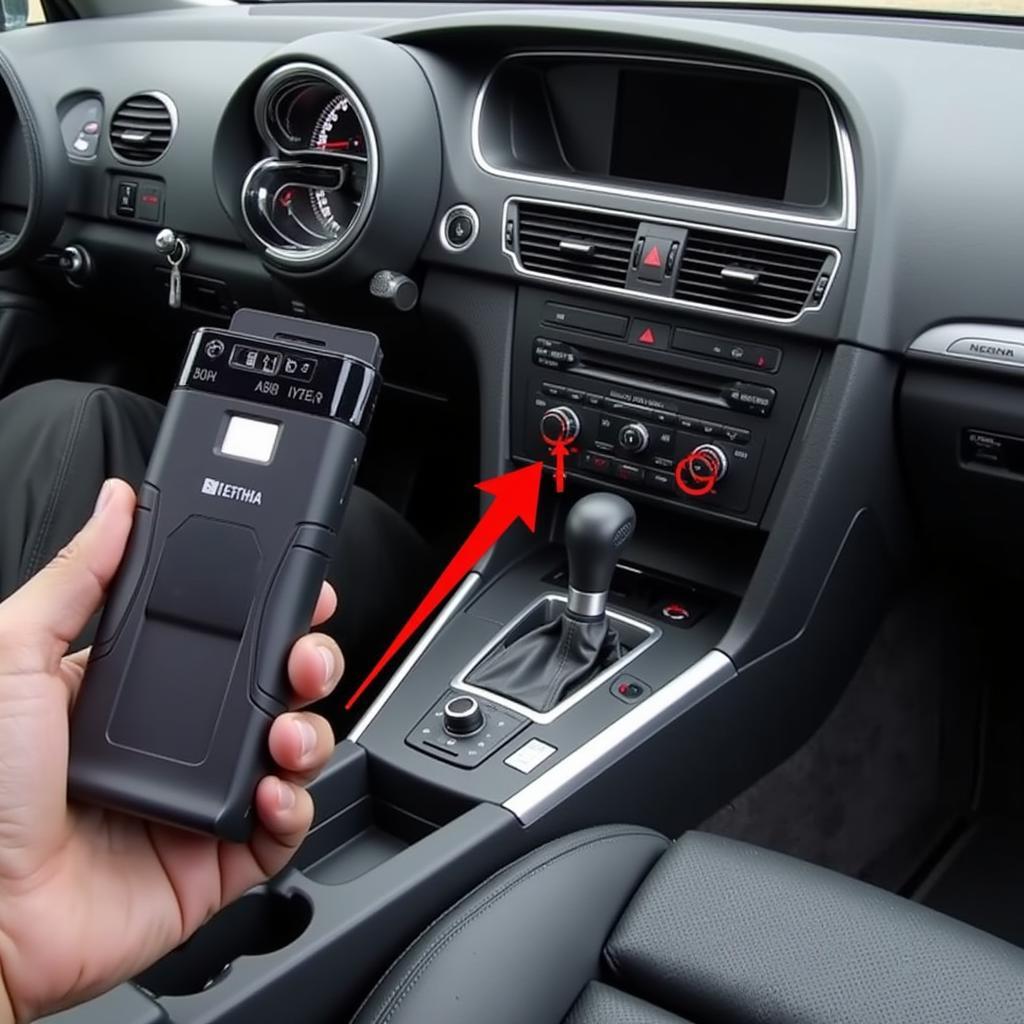Seeing a yellow brake warning light illuminate on your Audi A3’s dashboard can be a nerve-wracking experience. While it doesn’t necessarily signal a critical emergency, it’s an indication that a component within your braking system requires attention. Ignoring this warning could lead to more severe problems and costly repairs down the line.
This comprehensive guide will delve into the common causes of a yellow brake warning light in Audi A3s and provide you with insights on how to diagnose and address the issue.
Understanding Your Audi A3’s Brake Warning System
Your Audi A3 is equipped with a sophisticated electronic brake system designed to provide optimal stopping power and safety. The yellow brake warning light is part of this system, serving as a crucial communication channel between your car and you.
Unlike the red brake warning light, which often signifies a complete brake failure and requires immediate action, the yellow light typically indicates a less severe issue. It could be related to:
-
Worn Brake Pads: One of the most frequent triggers for the yellow brake warning light is worn brake pads. Your Audi A3’s brake pads are equipped with wear sensors that trigger the light when they reach a certain level of wear.
-
Malfunctioning Brake Pad Sensor: Sometimes, the brake pad wear sensors themselves can malfunction due to damage or corrosion. This can lead to a false warning light, even if your brake pads are in good condition.
-
Low Brake Fluid Level: Brake fluid is the lifeblood of your braking system, transmitting hydraulic pressure from the brake pedal to the brake calipers. A low brake fluid level can significantly reduce braking efficiency and trigger the warning light.
-
Issues with the ABS System: The Anti-lock Braking System (ABS) plays a crucial role in preventing wheel lock-up during hard braking. If the ABS system encounters a fault, it can trigger the yellow brake warning light.
 Audi A3 Dashboard Displaying Yellow Brake Warning Light
Audi A3 Dashboard Displaying Yellow Brake Warning Light
Diagnosing the Issue: A Step-by-Step Guide
Before assuming the worst-case scenario, it’s essential to approach the issue systematically. Here’s a step-by-step guide to help you diagnose the cause of the yellow brake warning light in your Audi A3:
-
Check Your Owner’s Manual: Your Audi A3’s owner’s manual is your best friend when it comes to understanding warning lights. Consult the manual to confirm the specific meaning of the yellow brake warning light for your model year.
-
Inspect Your Brake Pads: If you’re comfortable with basic car maintenance, visually inspect your brake pads. Look for significant wear or if the pad material is close to the metal backing plate. If you’re unsure, err on the side of caution and consult a mechanic.
-
Check Your Brake Fluid Level: Locate your Audi A3’s brake fluid reservoir (refer to your owner’s manual for its location). Check the fluid level, ensuring it’s between the minimum and maximum marks. If the level is low, it needs to be topped up. However, be cautious of sudden drops in fluid level, as this could indicate a leak in your braking system.
-
Listen for Unusual Noises: When applying the brakes, listen carefully for any unusual noises such as grinding, screeching, or clicking. These sounds can provide valuable clues about the potential issue. Grinding could indicate worn brake pads, while screeching might point towards a problem with the brake calipers.
-
Scan for Diagnostic Trouble Codes (DTCs): Modern cars like your Audi A3 have onboard diagnostic systems that store DTCs. These codes can pinpoint the source of the warning light. You can use an OBD (On-Board Diagnostics) scanner, available at auto parts stores or online, to read these codes.
 Locating the OBD Port in an Audi A3
Locating the OBD Port in an Audi A3
Seeking Professional Help: When and Why?
While some causes of the yellow brake warning light can be addressed with basic DIY maintenance, others require the expertise of a qualified mechanic, especially if:
-
You’re uncomfortable with car maintenance: Brakes are a critical safety component, and if you’re not confident in your abilities, it’s always best to leave it to the professionals.
-
The issue persists after DIY troubleshooting: If you’ve followed the steps above and the warning light persists, it’s crucial to seek professional help.
-
You suspect a more complex issue: Problems with the ABS system or other electronic components within the brake system often require specialized diagnostic equipment and knowledge.
Expert Insights:
“Remember, addressing brake issues promptly is crucial for your safety and the longevity of your Audi A3,” says Mark Stevenson, Senior Automotive Technician at European Auto Solutions. “Ignoring warning lights can lead to more extensive and expensive repairs in the future.”
Preventing Future Brake Issues:
Preventing future brake problems and ensuring the optimal performance of your Audi A3’s braking system involves:
-
Adhering to Regular Maintenance Schedules: Follow your Audi’s recommended maintenance schedule, which includes regular brake inspections and fluid flushes.
-
Adopting Smooth Braking Habits: Avoid harsh braking whenever possible. Smooth and gradual braking reduces wear and tear on your brake pads and rotors.
-
Paying Attention to Warning Signs: Don’t ignore any unusual noises or changes in brake pedal feel. Address these issues promptly to prevent them from escalating.
Conclusion
A yellow brake warning light in your Audi A3 is a clear signal that your car is trying to communicate a potential issue. By understanding the common causes, following the diagnostic steps outlined above, and knowing when to seek professional help, you can address the problem promptly and ensure the continued safety and performance of your Audi A3. Remember, proactive maintenance is key to preventing more severe and costly repairs down the road.
